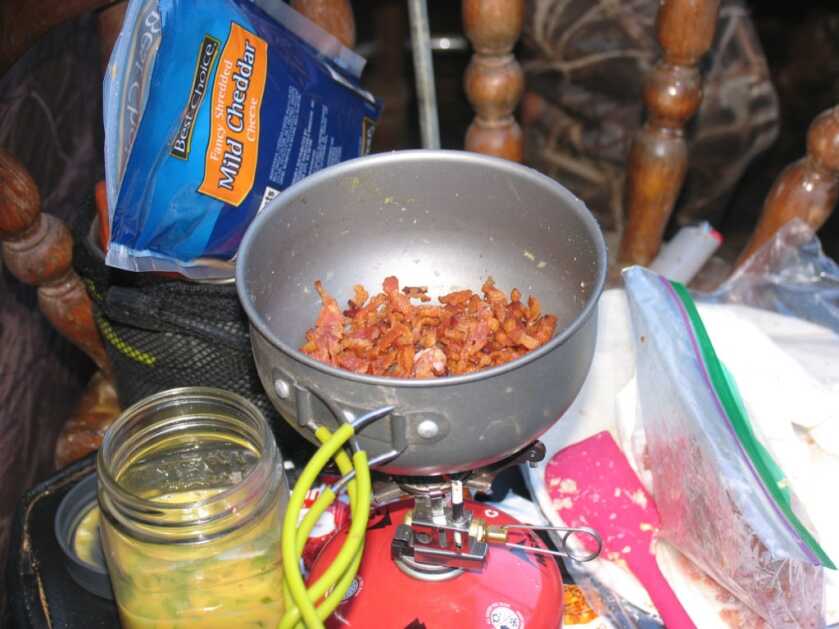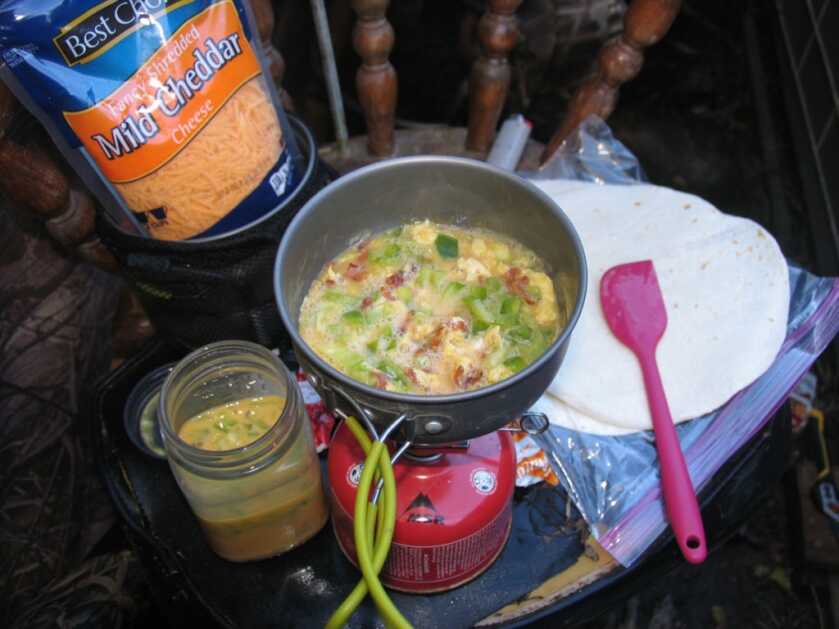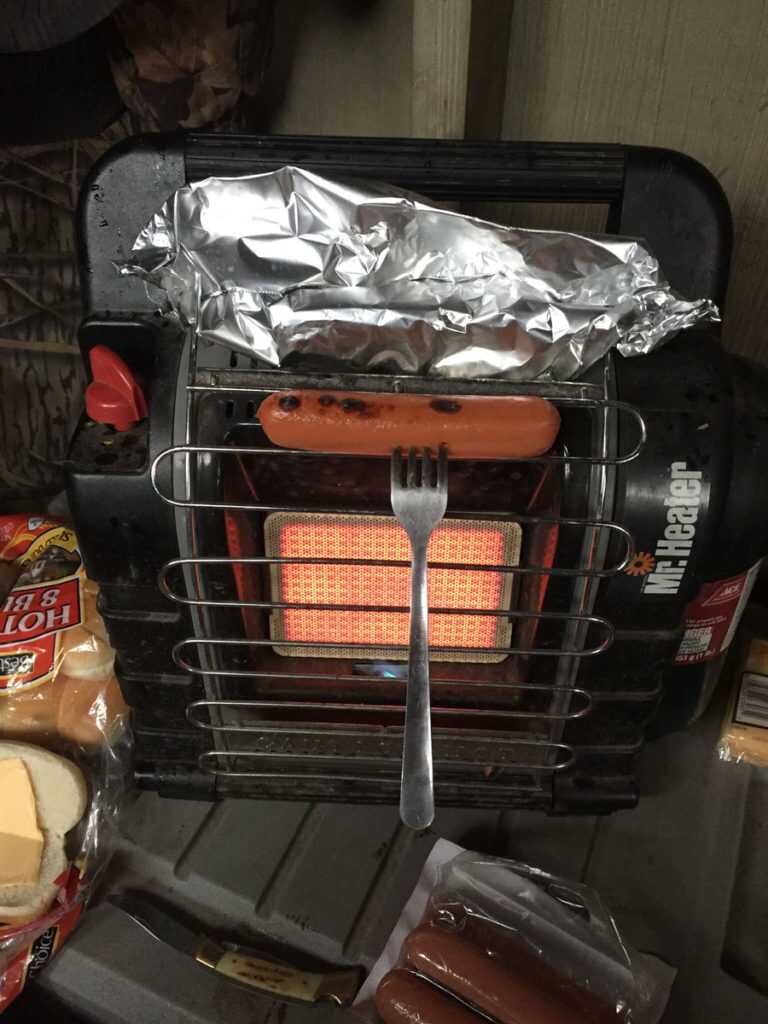One does not have to live through a day of waterfowl hunting on snack cakes, candy bars, apples, and jerky. The idea of cooking in the blind is a wonderful way to enjoy the hunt and share ideas about what to cook next. It is also not so much what you have, as long as it is hot and yummy. I know cooking in the blind can be a full course meal as seen in some magazines, but here, we are talking about something good to eat, easy to pack in, easy to clean up and typically gets folks to ask for more.
My friends have become accustomed to having something good to eat while hunting. One of our favorite meals is a scrambled egg western burrito. Seems like biscuits in one form or another is also a go to for the guys too. These treats are so easy to make, but let’s start first with what you need, equipment wise, to make a meal happen.
First off, you do not need a stove, oven, or any large cooking equipment. We use either a very small butane hiking pack stove, a single burner propane stove, or when really creative the blind heater. Both work great and are very portable. You will also need a small pan, spatula, paper towels, paper plates, and eating utensils. Now don’t get me wrong, I like the blinds that are fully equipped, but small still puts food in your stomach.

The night before, I take maybe a half dozen eggs and crack them into a pint jar. I pre-cook the bacon or sausage and place it into a zip-lock, as well as shredded cheeses of different types. I have positive reviews of the burritos if I either pre-cook the onions and green peppers or when I do not pre-cook them. You can add other items like mushrooms, red peppers, a little garlic, and salt and pepper. I also separately bag the vegetables. The final piece is a fresh burrito skin. With all the ingredients ready, I place them in the fridge the night before. Most days of waterfowl hunting temperatures are cool enough to keep the ingredients cold, but the next morning I place all into a small cooler bag to take to the blind also with my small non-stick skillet and a spatula.
The burrito is a masterful blend of southwestern, western and mid-western tastes and never disappoints. Start with the bacon or sausage that you previously cooked and warm it to get a little seasoning. The eggs along with the green peppers and onions are well mixed in the half-pint jar so you can add this to the pan. That 16-ounce jar usually feeds a burrito a piece for four guys. Once cooked, we add the cheese and the cover it all with a burrito skin to warm the skin up.






I can tell you this is such an easy way to make food in the blind. We typically pack a very small cooler bag with everything and once done, we pack it all out. The stove and pan all pack down and not sure I mentioned this but the stove also doubles as a phone charger. Yes kind of cool – but that’s another story.
We do try to diversify our menus and that has resulted in a couple other hunter favorites. These are still along the same lines of cooking, in that some of the ingredients are prepared ahead of time and others are prepared in the blind. How about some biscuits and gravy.




We have a couple other foods that make the trip to the blind each year and they are hotdogs and country ham. Usually by mid-day it is time for another round of food so hotdogs make a good meal. They are easy to cook and eat on buns, biscuits or burrito skins.

Our last favorite is the country ham biscuit. Add a slice of cheese if you want, but these are beyond good in the blind. We wrap the uncooked biscuit in foil and cook them on the blind heater once again. The same is true for the ham and once both are warmed they go together.


As blind buds that have enjoyed the company of hunting and good food for many years we all look forward to a little cooking and eating while hunting. Each year the menu expands so let me know what you cook. Having that packable stove really comes in handy too for coffee, soup and hot chocolate.

